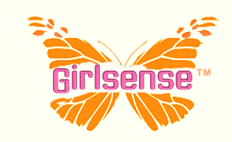
And it occurred to me that this will be the future of fashion. Visions of the future often put people in identical silver jumpsuits, as if we’ve “gotten over” our obsession with outward appearances. But fashion is a creative pursuit. Though the industry can be vacuous and superficial, fashion itself can be artful. And so Girl Sense is probably a taste of the future – people won’t be wearing silver jumpsuits, but clothes they’ve designed online or clothes by other indie designers, once a site like Girl Sense merges with print on demand technology.
This is already being done in some respect on sites like Cafe Press or Zazzle, but the problem with those sites is the price of the merchandise. Once the price on print on demand merchandise comes down, everything’s going to break open, as people will be able to be creators and consumers of whatever they desire.
So self-publishing is really just the beginning of what’s going to be a print on demand world. Printing suede boots is a fairly complicated process compared to printing a book, so self-publishing is where the print on demand revolution is beginning. And this is why I find self-publishing so attractive. It gives each person a creative outlet. That someone might make – and wear – hideous boots is totally irrelevant, if that’s what they choose to do. Same goes with books – if someone’s a terrible writer, this doesn’t overwhelm the importance that the person has a creative outlet.
In the print on demand fashion world, there’s going to be an abundance of new fashion designs. Some would argue that this abundance will make it harder for people to find something that’s not hideous. So the consumer has to do a little extra work. That it’s “less convenient” isn’t a great argument because it’s sort of like saying “I don’t like this because it makes me think too much.” If consumers become more-active participants in what they’re buying, this makes for a smarter consumer. If that consumer doesn’t like what he or she sees, maybe they’ll make their own, improving on what’s available. In short, it will be a more-creative world, without a few corporations deciding what should be in the market.
When I look at angry diatribes like this against self-publishing, I never see someone acknowledging the creative potential of self-publishing:
You see, I love my publishers. Absolutely adore them. Couldn’t live without them. Furthermore, I think anyone who willingly abandons theirs in favour of self-publishing, is either delusional, a peremptory jackass – or both.
You’ll never hear from me that self-publishing is easy. It’s not. It’s hard. Harder than having a traditional publisher who will do at least some of the work. That’s a fairly easy argument to make. But these sorts of arguments are looking five minutes ahead. My attachment to self-publishing is that it’s a major part of the future. That I write science fiction ties into this, as I like thinking well ahead of where we are today. So when you bring up the ebook sales figures of 2010 to explain the publishing industry is myopic. Nowhere would I advocate that writers drop everything and self-publish if they don’t have the saleable brand name of someone like Seth Godin. But when ebooks are a majority share of the market? When Barnes and Noble doesn’t exist anymore? When everything is bought and sold online?
This scenario could take decades to play out – as could the print on demand fashion world. So my advocacy of self-publishing is about where the world’s going, not where the world is today. And frankly, it’s fun to be on the ground floor of a revolution.
Get an Editorial Review | Get Amazon Sales & Reviews | Get Edited | Get Beta Readers | Enter the SPR Book Awards | Other Marketing Services






















I don’t think it will take anywhere close to decades. But I definitely agree that it’s a really fun time to be in publishing if you aren’t depending on the status quo to make a living.
Fifteen years ago, working as an industrial designer and therefore familiar with AutoCAD, pen plotters, etc, I predicted to my wife, as she struggled on the living room floor with a dress pattern, that in the near future she’d be able to go to the fabric store, find a pattern she liked, input her dimensions, and have a custom pattern printed that had no confusing “Cut here if you’re this size, and there if you’re that size” directions.
I later repeated this to a friend of mine, who said confidently that such things were so far in the future as to be invisible from where we stood. In fact, simply printing custom patterns is now trivial.
There’s a law of the universe somewhere that says “The rate of change doubles every eighteen months. For everything.”
What you are predicting sounds a lot like the replicator from Star Trek. Keep a block of raw material and program in whatever you want to print. A brownie, a white gold ring, a book, I like that idea.
I would love to be able to design my own shoes and clothes online.
But unless I’m an amazingly talented designer – the kind with real training and experience – my creations will probably end up looking like everybody else’s.
And I’ll still covet the works of the great designers. Their superb designs, backed by a marketing and distribution machine, will in no way be threatened by my amateur efforts.
I’m surprised you thought that article was a rant. Seemed like a sober enough argument.
? – but maybe there’s an amateur designer who is very talented but doesn’t have the means of creating his/her designs. Nobody’s saying that this model will replace mainstream manufacturing but that it’s a useful alternative.
And I didn’t think “jackass” was all that sober.